Yongfeng Zhang
DeSocial: Blockchain-based Decentralized Social Networks
May 28, 2025Abstract:Web 2.0 social platforms are inherently centralized, with user data and algorithmic decisions controlled by the platform. However, users can only passively receive social predictions without being able to choose the underlying algorithm, which limits personalization. Fortunately, with the emergence of blockchain, users are allowed to choose algorithms that are tailored to their local situation, improving prediction results in a personalized way. In a blockchain environment, each user possesses its own model to perform the social prediction, capturing different perspectives on social interactions. In our work, we propose DeSocial, a decentralized social network learning framework deployed on an Ethereum (ETH) local development chain that integrates distributed data storage, node-level consensus, and user-driven model selection through Ganache. In the first stage, each user leverages DeSocial to evaluate multiple backbone models on their local subgraph. DeSocial coordinates the execution and returns model-wise prediction results, enabling the user to select the most suitable backbone for personalized social prediction. Then, DeSocial uniformly selects several validation nodes that possess the algorithm specified by each user, and aggregates the prediction results by majority voting, to prevent errors caused by any single model's misjudgment. Extensive experiments show that DeSocial has an evident improvement compared to the five classical centralized social network learning models, promoting user empowerment in blockchain-based decentralized social networks, showing the importance of multi-node validation and personalized algorithm selection based on blockchain. Our implementation is available at: https://github.com/agiresearch/DeSocial.
LiteCUA: Computer as MCP Server for Computer-Use Agent on AIOS
May 24, 2025Abstract:We present AIOS 1.0, a novel platform designed to advance computer-use agent (CUA) capabilities through environmental contextualization. While existing approaches primarily focus on building more powerful agent frameworks or enhancing agent models, we identify a fundamental limitation: the semantic disconnect between how language models understand the world and how computer interfaces are structured. AIOS 1.0 addresses this challenge by transforming computers into contextual environments that language models can natively comprehend, implementing a Model Context Protocol (MCP) server architecture to abstract computer states and actions. This approach effectively decouples interface complexity from decision complexity, enabling agents to reason more effectively about computing environments. To demonstrate our platform's effectiveness, we introduce LiteCUA, a lightweight computer-use agent built on AIOS 1.0 that achieves a 14.66% success rate on the OSWorld benchmark, outperforming several specialized agent frameworks despite its simple architecture. Our results suggest that contextualizing computer environments for language models represents a promising direction for developing more capable computer-use agents and advancing toward AI that can interact with digital systems. The source code of LiteCUA is available at https://github.com/agiresearch/LiteCUA, and it is also integrated into the AIOS main branch as part of AIOS at https://github.com/agiresearch/AIOS.
SAE-SSV: Supervised Steering in Sparse Representation Spaces for Reliable Control of Language Models
May 22, 2025Abstract:Large language models (LLMs) have demonstrated impressive capabilities in natural language understanding and generation, but controlling their behavior reliably remains challenging, especially in open-ended generation settings. This paper introduces a novel supervised steering approach that operates in sparse, interpretable representation spaces. We employ sparse autoencoders (SAEs)to obtain sparse latent representations that aim to disentangle semantic attributes from model activations. Then we train linear classifiers to identify a small subspace of task-relevant dimensions in latent representations. Finally, we learn supervised steering vectors constrained to this subspace, optimized to align with target behaviors. Experiments across sentiment, truthfulness, and politics polarity steering tasks with multiple LLMs demonstrate that our supervised steering vectors achieve higher success rates with minimal degradation in generation quality compared to existing methods. Further analysis reveals that a notably small subspace is sufficient for effective steering, enabling more targeted and interpretable interventions.
Invisible Prompts, Visible Threats: Malicious Font Injection in External Resources for Large Language Models
May 22, 2025Abstract:Large Language Models (LLMs) are increasingly equipped with capabilities of real-time web search and integrated with protocols like Model Context Protocol (MCP). This extension could introduce new security vulnerabilities. We present a systematic investigation of LLM vulnerabilities to hidden adversarial prompts through malicious font injection in external resources like webpages, where attackers manipulate code-to-glyph mapping to inject deceptive content which are invisible to users. We evaluate two critical attack scenarios: (1) "malicious content relay" and (2) "sensitive data leakage" through MCP-enabled tools. Our experiments reveal that indirect prompts with injected malicious font can bypass LLM safety mechanisms through external resources, achieving varying success rates based on data sensitivity and prompt design. Our research underscores the urgent need for enhanced security measures in LLM deployments when processing external content.
Know the Ropes: A Heuristic Strategy for LLM-based Multi-Agent System Design
May 22, 2025Abstract:Single-agent LLMs hit hard limits--finite context, role overload, and brittle domain transfer. Conventional multi-agent fixes soften those edges yet expose fresh pains: ill-posed decompositions, fuzzy contracts, and verification overhead that blunts the gains. We therefore present Know-The-Ropes (KtR), a framework that converts domain priors into an algorithmic blueprint hierarchy, in which tasks are recursively split into typed, controller-mediated subtasks, each solved zero-shot or with the lightest viable boost (e.g., chain-of-thought, micro-tune, self-check). Grounded in the No-Free-Lunch theorem, KtR trades the chase for a universal prompt for disciplined decomposition. On the Knapsack problem (3-8 items), three GPT-4o-mini agents raise accuracy from 3% zero-shot to 95% on size-5 instances after patching a single bottleneck agent. On the tougher Task-Assignment problem (6-15 jobs), a six-agent o3-mini blueprint hits 100% up to size 10 and 84% on sizes 13-15, versus 11% zero-shot. Algorithm-aware decomposition plus targeted augmentation thus turns modest models into reliable collaborators--no ever-larger monoliths required.
Planet as a Brain: Towards Internet of AgentSites based on AIOS Server
Apr 22, 2025
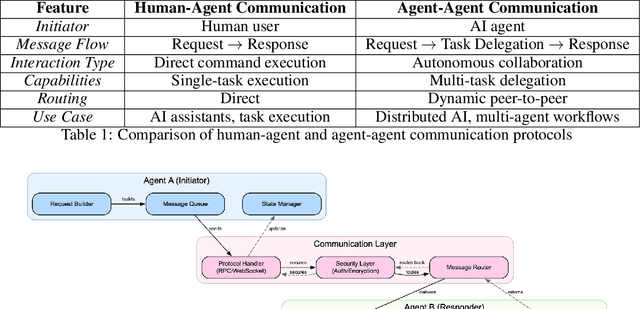
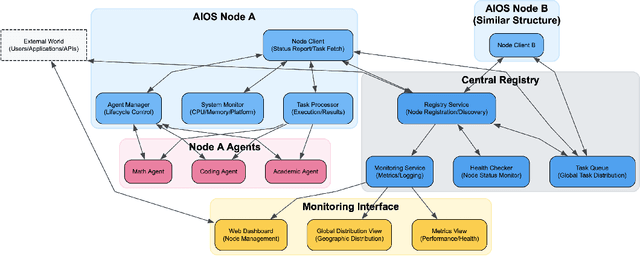

Abstract:The internet is undergoing a historical transformation from the "Internet of Websites" to the "Internet of AgentSites." While traditional Websites served as the foundation for information hosting and dissemination, a new frontier is emerging where AgentSites serve as the hubs of the internet, where each AgentSite hosts one or more AI agents that receive tasks, address them, and deliver actionable solutions, marking a significant shift in the digital landscape and representing the next generation of online ecosystems. Under this vision, AIOS, the AI Agent Operating System, serves as the server for the development, deployment and execution of AI agents, which is a fundamental infrastructure for the Internet of Agentsites. In this paper, we introduce AIOS Server, a runtime framework to host agents and enable global-scale collaboration among decentralized agents. AIOS Server provides a communication protocol leveraging the Model Context Protocol (MCP) and JSON-RPC to enable agent-agent or human-agent interactions. Each AIOS node operates as a server to host and execute agents, while supporting peer-to-peer coordination without reliance on centralized orchestration. Based on AIOS Server, we further present the world's first practically deployed Internet of Agentsites (AIOS-IoA), including AgentHub for agent registration and discovery and AgentChat for interactive communication, at https://planet.aios.foundation. The agent discovery mechanism based on Distributed Hash Tables (DHT) and a Gossip protocol serves as the search engine for the internet of agentsites. This work provides a practical foundation for building the Internet of Agentsites-a new paradigm where autonomous agents become first-class citizens of the web. The implementation is available at https://github.com/agiresearch/AIOS.Server and will be integrated into the AIOS main branch at https://github.com/agiresearch/AIOS.
Patients Speak, AI Listens: LLM-based Analysis of Online Reviews Uncovers Key Drivers for Urgent Care Satisfaction
Mar 26, 2025Abstract:Investigating the public experience of urgent care facilities is essential for promoting community healthcare development. Traditional survey methods often fall short due to limited scope, time, and spatial coverage. Crowdsourcing through online reviews or social media offers a valuable approach to gaining such insights. With recent advancements in large language models (LLMs), extracting nuanced perceptions from reviews has become feasible. This study collects Google Maps reviews across the DMV and Florida areas and conducts prompt engineering with the GPT model to analyze the aspect-based sentiment of urgent care. We first analyze the geospatial patterns of various aspects, including interpersonal factors, operational efficiency, technical quality, finances, and facilities. Next, we determine Census Block Group(CBG)-level characteristics underpinning differences in public perception, including population density, median income, GINI Index, rent-to-income ratio, household below poverty rate, no insurance rate, and unemployment rate. Our results show that interpersonal factors and operational efficiency emerge as the strongest determinants of patient satisfaction in urgent care, while technical quality, finances, and facilities show no significant independent effects when adjusted for in multivariate models. Among socioeconomic and demographic factors, only population density demonstrates a significant but modest association with patient ratings, while the remaining factors exhibit no significant correlations. Overall, this study highlights the potential of crowdsourcing to uncover the key factors that matter to residents and provide valuable insights for stakeholders to improve public satisfaction with urgent care.
Cerebrum (AIOS SDK): A Platform for Agent Development, Deployment, Distribution, and Discovery
Mar 14, 2025Abstract:Autonomous LLM-based agents have emerged as a powerful paradigm for complex task execution, yet the field lacks standardized tools for development, deployment, distribution and discovery of agents. We present Cerebrum, an Agent SDK for AIOS that addresses this gap through three key components: (1) a comprehensive SDK featuring a modular four-layer architecture for agent development, encompassing LLM, memory, storage, and tool management; (2) a community-driven Agent Hub for sharing and discovering agents, complete with version control and dependency management; (3) an interactive web interface for testing and evaluating agents. The platform's effectiveness is demonstrated through implementations of various agent architectures, including Chain of Thought (CoT), ReAct, and tool-use agents. Cerebrum advances the field by providing a unified framework that standardizes agent development while maintaining flexibility for researchers and developers to innovate and distribute their agents. The live website is at https://app.aios.foundation, the code is at https://github.com/agiresearch/Cerebrum, and video is at https://app.aios.foundation/video-demo.
LLM as GNN: Graph Vocabulary Learning for Text-Attributed Graph Foundation Models
Mar 05, 2025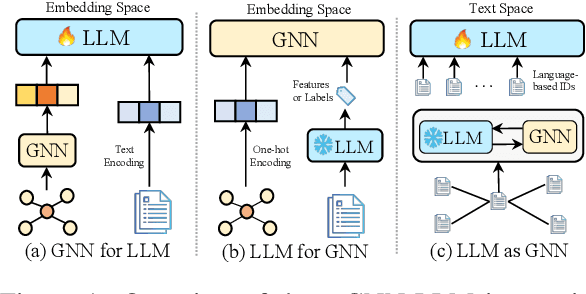
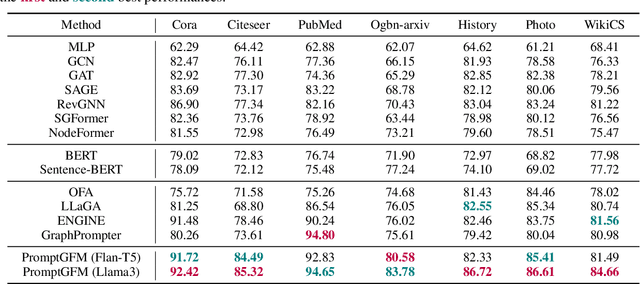
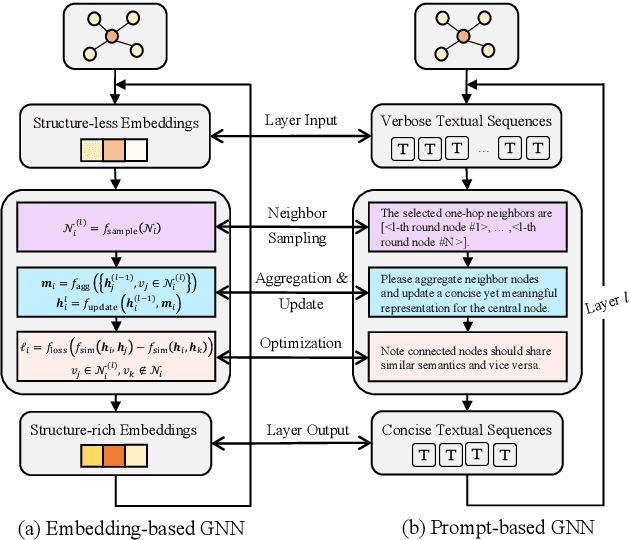
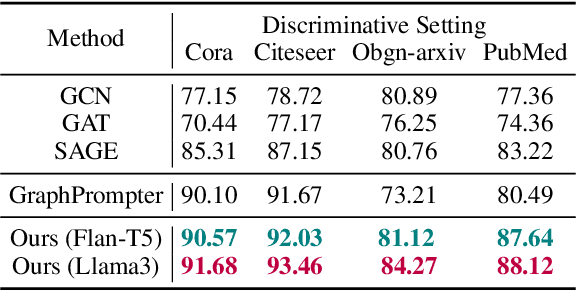
Abstract:Text-Attributed Graphs (TAGs), where each node is associated with text descriptions, are ubiquitous in real-world scenarios. They typically exhibit distinctive structure and domain-specific knowledge, motivating the development of a Graph Foundation Model (GFM) that generalizes across diverse graphs and tasks. Despite large efforts to integrate Large Language Models (LLMs) and Graph Neural Networks (GNNs) for TAGs, existing approaches suffer from decoupled architectures with two-stage alignment, limiting their synergistic potential. Even worse, existing methods assign out-of-vocabulary (OOV) tokens to graph nodes, leading to graph-specific semantics, token explosion, and incompatibility with task-oriented prompt templates, which hinders cross-graph and cross-task transferability. To address these challenges, we propose PromptGFM, a versatile GFM for TAGs grounded in graph vocabulary learning. PromptGFM comprises two key components: (1) Graph Understanding Module, which explicitly prompts LLMs to replicate the finest GNN workflow within the text space, facilitating seamless GNN-LLM integration and elegant graph-text alignment; (2) Graph Inference Module, which establishes a language-based graph vocabulary ensuring expressiveness, transferability, and scalability, enabling readable instructions for LLM fine-tuning. Extensive experiments demonstrate our superiority and transferability across diverse graphs and tasks. The code is available at this: https://github.com/agiresearch/PromptGFM.
ECCOS: Efficient Capability and Cost Coordinated Scheduling for Multi-LLM Serving
Feb 27, 2025Abstract:As large language models (LLMs) are increasingly deployed as service endpoints in systems, the surge in query volume creates significant scheduling challenges. Existing scheduling frameworks mainly target at latency optimization while neglecting the capability of LLMs to serve different level of queries, which could lead to computational resource waste. This paper addresses this challenge by proposing a capability-cost coordinated scheduling framework, ECCOS, for multi-LLM serving, which explicitly constrains response quality and workload to optimize LLM inference cost. Specifically, it introduces the two-stage scheduling by designing a multi-objective predictor and a constrained optimizer. The predictor estimates both model capabilities and computational costs through training-based and retrieval-based approaches, while the optimizer determines cost-optimal assignments under quality and workload constraints. It also introduces QAServe, a dataset collected for sample-wise response quality and costs by zero-shot prompting different LLMs on knowledge QA and mathematical reasoning. Extensive experiments demonstrate that ECCOS improves success rates by 6.30% while reducing costs by 10.15% compared to existing methods, consuming less than 0.5% of LLM response time. The code is available at: https://github.com/agiresearch/ECCOS.
 Add to Chrome
Add to Chrome Add to Firefox
Add to Firefox Add to Edge
Add to Edge